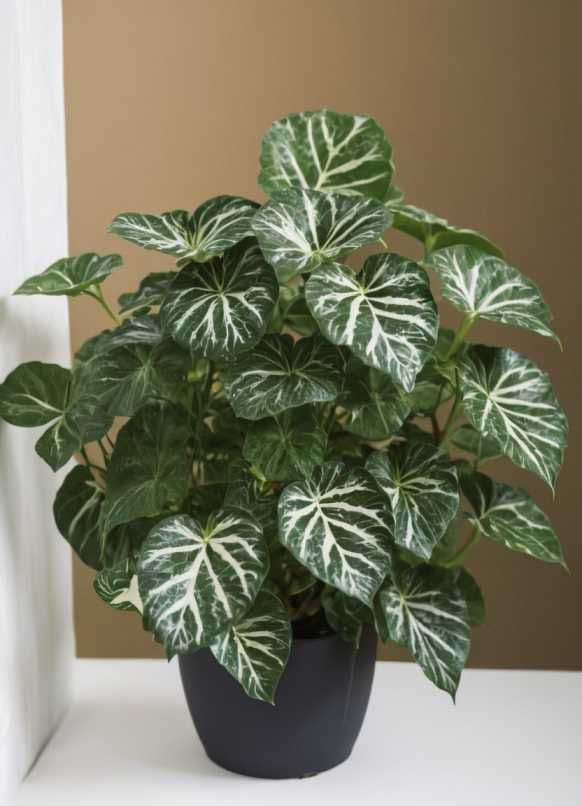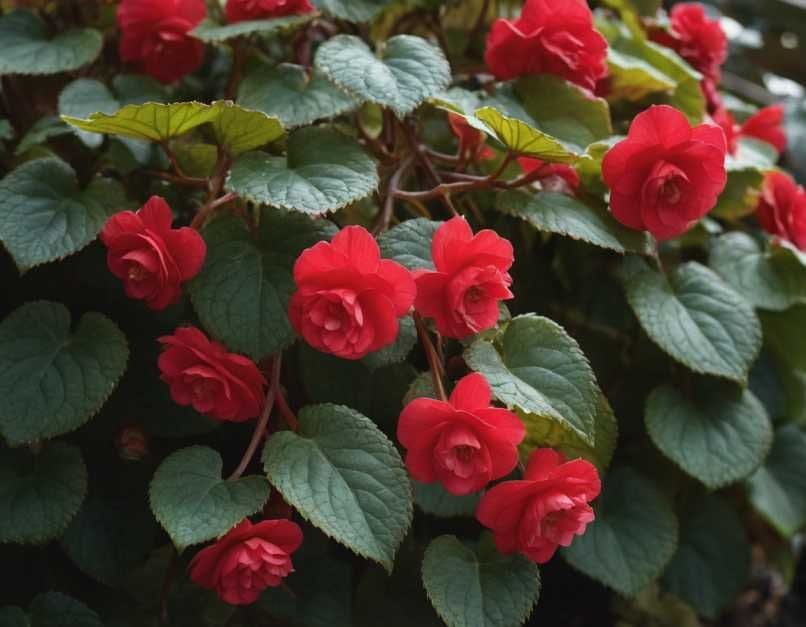Cissus Discolor, also known as Rex Begonia Vine, is a captivating plant prized for its stunning foliage. With intricate silver veins contrasting against deep green and purple hues, this tropical beauty adds a touch of elegance to any indoor space.
Cissus Discolor and Rex Begonia vines make for popular houseplants, thanks to their trailing vines, ornamental leaves, and tropical appeal. Though they have different care needs and growth habits, both plants can make striking additions to indoor plant collections or displays. This guide offers tips on caring for both Cissus Discolor and Rex Begonia vines, how to propagate each one, and expert advice for ensuring their health and vigor.
Understanding Cissus Discolor Care Indoors
Caring for Cissus Discolor:
Cissus Discolor, a member of the grape family, thrives indoors when provided with the right conditions. Its heart-shaped leaves, reminiscent of stained glass, make it a sought-after addition to any plant enthusiast's collection.
Native to South America, Cissus Discolor is commonly known as the grape ivy or oak leaf ivy. With its deep green, oak-shaped leaves and vining stems, it offers a unique look among houseplants. Here is how to care for cissus discolor plants:

Light Requirements:
Place your Cissus Discolor in bright, indirect light. Stay out of the direct sun, it can scorch the fragile leaves. Rooms with east or north-facing windows are ideal. Cissus discolor plants thrive in bright, indirect sunlight. Place them near a southern or western window where they’ll receive plenty of ambient daylight. Provide at least 4 hours per day of strong, indirect light. Low light will cause leggy growth
Temperature and Environment:
Cissus discolor thrives in average home temperatures between 60-80°F. High temperatures can cause leaf scorching. These tropical vines also appreciate 40-50% ambient humidity. Group plants together or use a pebble tray to boost moisture.
Watering Needs:
Keep the soil evenly moist but not waterlogged. Before rewetting, let the top inch of soil dry out a little. Take care not to overwater, as cissus discolor plants are prone to root rot if left in soggy soil. An excessively wet pot will cause leaf spotting and drop.
Humidity:
Cissus Discolor thrives in high humidity. Increase humidity by misting the leaves regularly or placing a humidifier nearby
Soil:
Use a well-draining potting mix, and replant in fresh soil every 2-3 years as nutrients deplete over time. Aim for soil with ample peat moss or coco coir to retain some moisture.
Fertilizer:
During the growth season, apply a monthly feeding of a balanced liquid fertilizer that has been diluted to half-strength. During the growing season, provide a balanced fertilizer to support healthy foliage growth.
Pruning:
Pinch back leggy stems to encourage bushier growth. Prune anytime to control size.
Pot Size:
Size up the pot as needed to accommodate new growth, or restrict the pot to control overgrowth. Cissus tolerates being slightly rootbound.
Common Problems:
Overwatering, humidity that’s too low, direct hot sunlight, pests like mealybugs, and elongated leggy growth are common issues.
Exploring Rex Begonia Vine Care
Rex Begonia Vine, often confused with Cissus Discolor due to similar foliage, is equally striking. It boasts vibrant leaves in shades of silver, purple, and green, making it an eye-catching addition to indoor gardens.
Care Guide:
- Light and Temperature: Rex Begonia Vine thrives in indirect light but can adapt to lower light conditions. Maintain a temperature range of 60°F to 85°F (15°C to 29°C) for optimal growth.
- Watering and Soil: Keep the soil slightly moist, avoiding overwatering to prevent root rot.
- Humidity Management: Similar to Cissus Discolor, Rex Begonia Vine appreciates high humidity levels. Use misting or humidity trays to create a suitable environment.
- Fertilization: During the growing season, provide a balanced fertilizer to support healthy foliage growth.
Propagation Techniques for Cissus Discolor and Rex Begonia Vine:
- Stem Cuttings: Both plants propagate well from stem cuttings. Snip healthy stems and root them in a moist growing medium until roots develop.
- Leaf Cuttings: For Rex Begonia Vine, try propagating from healthy leaves by placing them on top of a moist growing medium until new growth emerges.
Advantages of Growing Cissus Discolor and Rex Begonia Vine Indoors:
- Aesthetic Appeal: Their vibrant foliage adds color and texture to indoor spaces, enhancing the overall decor.
- Air Purification: Both plants contribute to indoor air quality by filtering out pollutants.
- Therapeutic Benefits: Indoor gardening with these plants can reduce stress and promote well-being.
Expert Tips:
Take cuttings in spring or summer for best results. Use a rooting hormone powder to hasten growth. Mini greenhouse propagators also boost success rate. Monitor water carefully to avoid rotting unrooted cuttings.
How to Propagate Rex Begonias
Propagate rex begonias from stem cuttings or leaf cuttings in late winter through summer:
Stem Cuttings
- Cut a mature, healthy stem below a leaf node. Remove lower leaves.
- Dip the cut end into rooting hormone powder/gel to encourage roots.
- Stick into a moist propagating mix. Loosely cover with a plastic bag.
- Place in filtered sunlight, keeping the soil evenly moist.
- Gently tug to check for root development in 6-8 weeks before transplanting.
Leaf Cuttings
- Choose a colorful healthy leaf. Cut the leaf and include a 2” stem section.
- Allow the cut to dry briefly before inserting it into the soil or soilless mix.
- Water sparingly – just enough to prevent leaf shriveling.
- Small plantlets will begin emerging from the veins in several weeks.
- Separate and pot up the baby begonias once a good root system is established.
Take cuttings from the healthiest, most vibrant plants. Rex begonias propagate best in heat – 65°F or warmer. Enclosing in mini greenhouses boosts humidity. Remove flower buds to direct energy towards root and leaf growth.
Conclusion: Cissus Discolor and Rex Begonia Vine, with their captivating foliage and relatively easy care requirements, are fantastic additions to indoor plant collections. By understanding their specific care needs, propagation methods, and the advantages they offer as indoor plants, enthusiasts can enjoy their beauty while creating visually appealing and vibrant indoor spaces.
About Inaya Grace
Inaya cultivates a green and delicious life. Join for plant-based inspiration, creative crafts, eco-friendly tips, and a positive community

